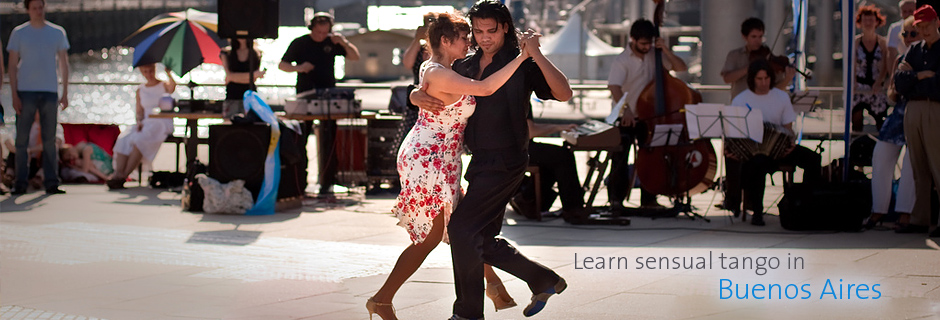
Buenos Aires Travel Guide: Attractions
Heavily influenced by European style, architecture and cuisine, this cosmopolitan port city of Latin America offers visitors a cultural experience that reflects Porteños rich immigrant background. While there are important historic monuments to be seen, travelers to this metropolis would not receive an authentic Buenos Aires vacation experience without also checking out a sensual Tango show or dining on delicious steaks from a true gaucho ranch in the Greater Buenos Aires area. This “Paris” of the Americas - as it is known for its architecture that is reminiscent of the design of the “City of Lights” – has so much to offer, so be sure to plan a lengthy visit to see it all.
The mammoth Obelisco monument of Buenos Aires was constructed in 1936 to commemorate 400th anniversary of the founding of the city of “Fair Airs”. Situated in the Plaza de la Republica, it measures 267 meters (220 ft) in height, with a base area of 161 square meters (530 square ft) and has come to be recognized as a symbol of not just the city, but of the country. It is the meeting and celebratory point for fans when the national football team does well and also serves as a venue for government sponsored cultural events.
A morbid but captivating attraction in this city is the Cementerio de la Recoleta. Located in the wealthy neighborhood of the same name, this cemetery was meant for the elite of Buenos Aires and houses the body of its most famous figure, Eva Perón. Immense Greek columns welcome visitors, while the inside features distinct marble mausoleums, each unique and some decorated with beautiful statues. “City block” sections separate rows and rows of crypts that feature bronze or brass plaques with family names etched on. Trees line the rows at this graveyard, providing a beautiful resting place to figures that were once the crème de la crème of Buenos Aires society.
For visitors looking to get away from the bustling crowds, hectic noise and traffic of Buenos Aires, a great and relaxing alternative would be a visit to the Reserva Ecológica Costanera Sur, situated in the dock district of Puerto Madero. The only ecological reserve in the city, it has interesting origins as waste material from demolished buildings were tossed into the river were the reserve now exists. As time went on, sediment mixed with sand and a marshy land developed, which would serve as a foundation for the reserve, eventually becoming home to willow trees, wild flamingos, parrots and more distinct flora and wildlife. With numerous trails that are perfect for strolling, bird watching and cycling, this reserve is the perfect escape from the craziness of this capital city.
One of the most colorful neighborhoods in all Buenos Aires is the tango and football loving district of La Boca. Here tourists can walk along the famous Caminito pedestrian street, catch a spontaneous Tango dance (and even pose for a picture with the dancers!) and purchase tango-related memorabilia, along with wonderful pieces of art by Boca resident Benito Quinquela Martín who spent years preparing and painting the walls facing Caminito in the vivid colors that the street is now known for. Football fans would also be recommended to visit the neighborhood’s La Bombonera Stadium, home to the world famous Boca Juniors football club. Here tourists can visit and tour the grounds of the blue and yellow (official team colors) stadium that comes alive when the home team is there to play a match.
Downtown Buenos Aires is home to some of the city’s most famous historical attractions, such as the Plaza de Mayo that has origins tracing back to the city’s beginning and has been used as a political or cultural event meeting point since that era. The presidential palace, more commonly known as La Casa Rosada (“The Pink House” thanks to the pinkish tone of its exterior) lies at the eastern end of the Plaza de Mayo and its balcony that faces this direction has been utilized as a podium by Argentine presidents and historical figure. Also overlooking the plaza is the Catedral Metropolitan, the main Catholic church of the city, constructed in 16th century Buenos Aires but re-established a few times afterwards due to poor quality materials used. This Cathedral holds the remains of General José de San Martín, liberator of Argentina, in a beautiful marble mausoleum.
Opera fans will be delighted to know that one of the finest opera houses around the world calls Buenos Aires home. Teatro Colón opened in 1908, can sit 2,487, with standing room available for 1,000 and is considered to in the top five of opera houses with the best acoustics worldwide. Situated on the very wide 9 de Julio Avenue, another attraction in itself, this opera has housed national and international opera stars, as well as ballet and orchestra performances.
For those looking to get away from the city, Argentina for Less can arrange a visit to an authentic gaucho ranch during your visit. Live the life of an Argentine cowboy by riding horses, eating traditional gaucho foods such as delicious barbequed steaks and drink renowned Argentine wine with gauchos who are sure to make your escape from the city an enjoyable one.
We do have the lowest prices. We will meet or beat any internet published rates from companies outside Argentina
for
all package tours. All HOTELS and TOURS are based on US standards. No late booking fees.
We have the best testimonials. Our professional and expert staff is at your service and will reply to any request
within 24 hours. While traveling in Argentina you will have access to our local 24/7 emergency number.

